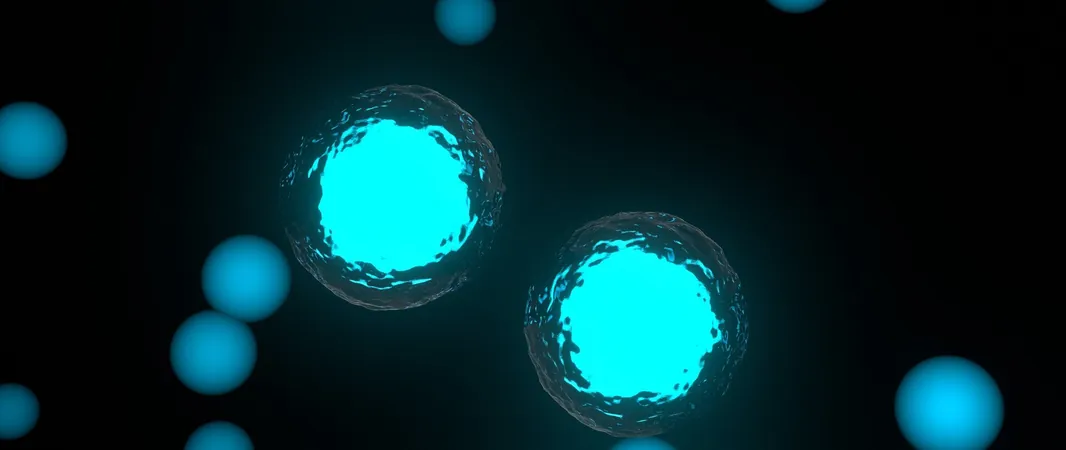
Unlocking the Mystery: Fast-Dividing Cells Expose New Vulnerabilities to Cancer Volatility
2025-04-30
Author: Ming
New Research Unravels Cancer's Secrets
In a groundbreaking study, Sinai Health researchers have determined that the speed at which cells divide plays a crucial role in their susceptibility to cancerous mutations. Leading the charge, Dr. Rod Bremner, a Senior Investigator at the Lunenfeld-Tanenbaum Research Institute in Toronto, has unveiled how the length of the cell cycle—time taken for one cell to split into two—could make or break a cell's journey toward cancer.
The Cancer Connection: Not All Mutations Are Created Equal
Published in the esteemed journal Nature, the research highlights an astonishing truth: cancer doesn't just spring from any mutated cell. The body boasts sophisticated defenses that neutralize or eliminate potentially cancerous cells. Remarkably, an average adult harbors millions of mutated cells, yet cancer remains a rarity, thanks to these protective mechanisms including apoptosis (or programmed cell death) and immune system responses.
Speed Kills: The Rapid Divide of Cancer's Candidates
Dr. Bremner and his team have established that faster-dividing cells—those with shorter cell cycles—are significantly more prone to cancer. Interestingly, cells that divide more slowly exhibit a resistance to transformation into cancerous entities. This pattern held true across various types of cancers, such as retinoblastoma, pituitary, and lung cancers.
A Surprising Twist: Mutated Cells Can Go Back to Normal
Delving deeper, the researchers noticed an unexpected ability in many mutation-carrying cells: they often exit the dividing frenzy and revert to normalcy. Dr. Bremner notes, "Many mutated cells escape cancer by simply becoming normal again after a brief period of abnormal division."
Breaking Ground in Cancer Research Strategy
In an innovative approach, the team targeted retinoblastoma by examining tumor-suppressing mutations across multiple preclinical models. They found that interventions designed to suppress cancer consistently increased cell cycle length. Notably, they discovered that the origin of retinoblastoma comes from a cell type that divides quicker than those associated with non-cancerous mutations.
Slowing Down the Race Against Cancer
The experiments further illustrated that slowing down the rate of cell division can independently curb cancer development, independent of other well-studied resistance mechanisms like apoptosis. This positions cell cycle length as a unique and crucial avenue for cancer resistance.
A Bright Future: Targeting Cell Cycle Length to Combat Cancer
These groundbreaking findings suggest potential therapeutic interventions targeting cell cycle length could be key in cancer prevention. By focusing on reducing the speed of cell division, researchers envision new treatment strategies that could protect high-risk individuals from developing cancer.



 Brasil (PT)
Brasil (PT)
 Canada (EN)
Canada (EN)
 Chile (ES)
Chile (ES)
 Česko (CS)
Česko (CS)
 대한민국 (KO)
대한민국 (KO)
 España (ES)
España (ES)
 France (FR)
France (FR)
 Hong Kong (EN)
Hong Kong (EN)
 Italia (IT)
Italia (IT)
 日本 (JA)
日本 (JA)
 Magyarország (HU)
Magyarország (HU)
 Norge (NO)
Norge (NO)
 Polska (PL)
Polska (PL)
 Schweiz (DE)
Schweiz (DE)
 Singapore (EN)
Singapore (EN)
 Sverige (SV)
Sverige (SV)
 Suomi (FI)
Suomi (FI)
 Türkiye (TR)
Türkiye (TR)
 الإمارات العربية المتحدة (AR)
الإمارات العربية المتحدة (AR)